The best things to do in Berlin, Germany
A city in perpetual flux, sprawling in scope and impossibly hip, Berlin can be a tough nut to crack. Our guide focuses on the cultural, culinary and retail attractions to tick off now.

More than a decade ago, Berlin’s official motto, coined by its former mayor Klaus Wowereit, was “poor but sexy”. And while these days the city, with burgeoning creative expat and digital-nomad communities, is no longer poor, the good news is that it’s still sexy. Even before the pandemic, Berlin was evolving from a legendary party capital to one that’s a bit more grown-up. Companies such as Google and SoundCloud have opened offices here, joining dozens of startups like Enpal and CleanHub, and money continues to pour in.
At the same time, architects including 3XN and David Chipperfield are designing modern landmarks, as well as renovating historic cultural institutions such as Mies van der Rohe’s Neue Nationalgalerie. Despite all this gentrification, Berlin is still a city flush with creative possibilities, sown with unexpected and experimental projects and populated by countless world-class contemporary artists and designers, from Olafur Eliasson to Thomas Struth and Hella Jongerius.
Lately, Berlin has also started to welcome an array of smartly designed hotels that properly reflects the city’s dynamism, and ambitious new restaurants are flowering even in the grittiest neighbourhoods, finally giving the city a food scene that can compete with other European capitals. Former abandoned railways, such as Gleisdreieck, have been transformed into well-conceived parks, while cultural institutions are flourishing everywhere, even within the city’s leafy outskirts.
For all it has to offer, Berlin is not so easy to navigate, especially for first-timers. Partly because it’s so sprawling – it’s nine times the size of Paris – every neighbourhood is its own universe. And partly because, if you’ve ever stood in line at the legendary nightclub Berghain, you know that whatever passes for cool in other cities does not cut it here. You still can’t buy your way into Berlin’s scene, and that’s how Berliners like it.
Where to stay

Château Royal: Finally, Berlin gets the hotel it deserves. Château Royal, which opened late last year in the heart of Mitte, fuses two heritage-listed buildings dating from 1850 and 1910. Interior architect Irina Kromaye ornamented the 93-room lodging with materials that evoke the city’s heyday: oak panelling, brass hardware and headboards crafted from Viennese wickerwork in the guest suites. The hotel is owned and overseen in part by Stephan Landwehr, a co-founder of the art-world haunt Grill Royal. More than a hundred artworks, many of them site-specific, scattered throughout the property lend it creative cred. These were curated by Landwehr’s wife, gallerist Kirsten Landwehr, and Krist Gruijthuijsen, director of Berlin’s KW Institute for Contemporary Art. There’s a sound piece by James Richards in the winter garden courtyard, curtains by artist and filmmaker John Bock, and several sculptures from Alicja Kwade, including a human-sized ghost sculpture positioned next to the entrance. Rooms from $405. chateauroyalberlin.com
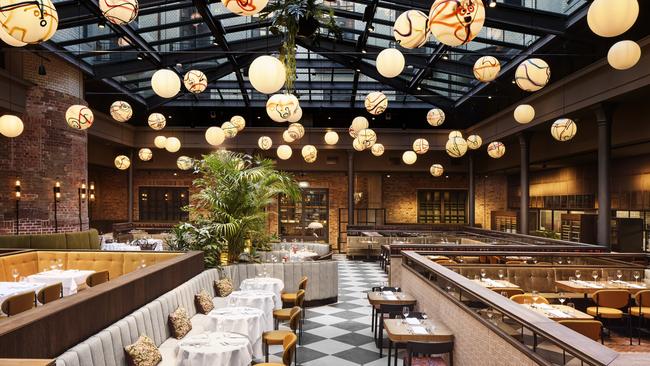
Hotel Telegraphenamt: Situated in the centre of buzzy Mitte, yet removed on a quiet street, this 97-room hotel occupies the city’s former telegraph office. The message: it’s a slick new contender on the scene. That said, the ground floor is still evolving. Currently it’s home to a spacious and luminous lobby, bar and restaurant, where the menu is composed of international greatest hits, from sushi to pulled pork, but is a bit too fussily plated. The rooms, though, are very generous, considered and designed in an eclectic style with herringbone floors, mirrored doors and elegant settees. A modern gym and a Japanese bakery on the ground level are coming soon. Rooms from $520. telegraphenamt.com

Wilmina: While Wilmina’s location – at the far end of Kantstrasse in the ritzy enclave of Charlottenburg – is a bit removed from Berlin’s action, the building itself is wildly enchanting. Opened last year, the hotel is hidden behind the façade of a storied courthouse and emerges, behind a brick entrance wall, like a lost castle covered in vines. While its history is hardly romantic – part of the building was once a women’s prison – its architects and owners, Grüntuch Ernst, have done a stellar job of exorcising the bad juju while still acknowledging its past. The light-filled guest rooms – there are 44 in total – feature neutral furnishings, plant installations and rain showers. The restaurant, Lovis, overseen by chef Sophia Rudolph, is worth a visit for its leafy setting and seasonal fare, including inventive dishes such as chilled pea soup with kimchi and chorizo. Rooms from $210. wilmina.com

The Hoxton: While it may be located in a more bourgeois part of the city, the posh Charlottenburg neighbourhood, the just-opened Hoxton manages to still feel very “Berlin” thanks to its eclectic, lively ground-floor lobby and restaurant, the popular House of Tandoor, which serves zinging Indian fare and is one of the few spots in Berlin you can get a decent masala chai. The Hoxton’s public spaces are fun but laid-back – the kind of places where you can get some work done on your laptop by day and have an artisanal cocktail at night before you head off to wilder corners of the city. The 234 rooms are, as is typical for the chain, stylishly decorated but relatively small. Who’s sleeping in Berlin anyway? Rooms from $345. thehoxton.com
Where to shop
The Harrods of Berlin is KaDeWe, a legendary department store that’s been slowly reinvented over the last few years by its new owners. The massive gourmet emporium on the sixth floor now hosts outposts of some of the city’s trendiest food enterprises, such as BRLO Chicken & Beer and Brammibal’s Donuts. A lesser-known but worthy shopping destination is Manufactum, a tasteful, well-curated, two-storey store that features artisanal objects and heritage brands from Germany and surrounding countries. This is where you can find everything from the perfect gardening tools to old-school wooden toys and handmade soap from an obscure Italian monastery.
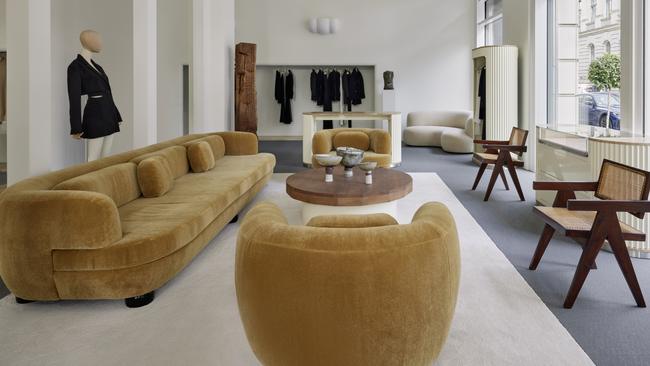
For some time now there have been two important fashion addresses for Berlin’s best dressed: Andreas Murkudis, which sells fashion-forward labels like Dries Van Noten and Lutz Huelle, housed in a loft-like space hidden in a courtyard off of the gritty Potsdamer Strasse; and The Square, a less edgy, more traditional boutique, which has two locations in Berlin. If Andreas Murkudis dresses the artists and gallerists, The Square is where wealthy international collectors shop.
For the younger generation, there’s Voo in Kreuzberg, which offers alternative emerging and vintage labels, like the Berlin-born GmbH and the Istanbul-based Cult Form. For The-Matrix-meets-tech-millionaire set, there’s the underground boutique Darklands, which sells sleek leather and cotton unisex pants and tops, mostly in shades of black. For independent shops stocking more traditional brands, but with a cool eclectic mix, head to Schwarzhogerzeil or April First, both in Mitte.

While there, be sure to visit great little vintage shops such as Das Neue Schwarz (the New Black), which offers gently used pieces from covetable brands including Maison Margiela and Yohji Yamamoto. You can still find stores in Berlin that are unapologetically eccentric. A recent example is the boutique of the artist and milliner Maryam Keyhani, who creates joyful, surreal hats in the shapes of giant meringues. Be warned: she only opens the shop when she feels like it (or when someone calls to make an appointment).
Eat and drink
A brave new world of gastronomy is emerging in Berlin, with the focus on ambitious but easygoing bistros, natural-wine bars with small plates and upscale German pub concepts. One food trend is elevated vegan and vegetarian food, which was spearheaded by former club owner Heinz “Cookie” Gindullis. His restaurant, Cookies Cream, in an alley just a few blocks from the Brandenburg Gate, is one of the few vegetarian restaurants to hold a Michelin star. Another compelling trend is chefs cooking with fire – on Argentinian or Japanese-style grills, around fire pits or in wood-fired ovens. Among them, there’s a new generation of young, ambitious talent, unafraid to go its own way.
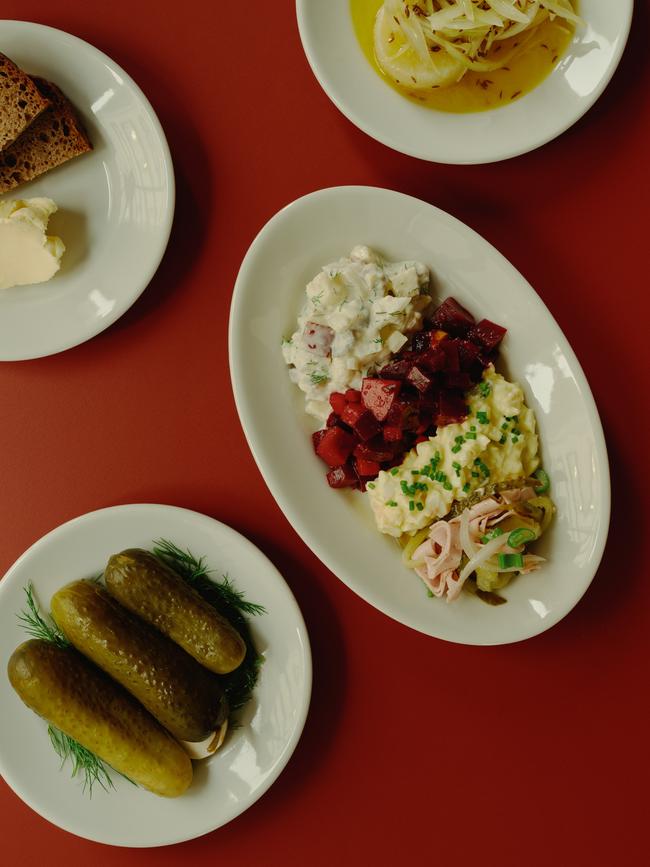
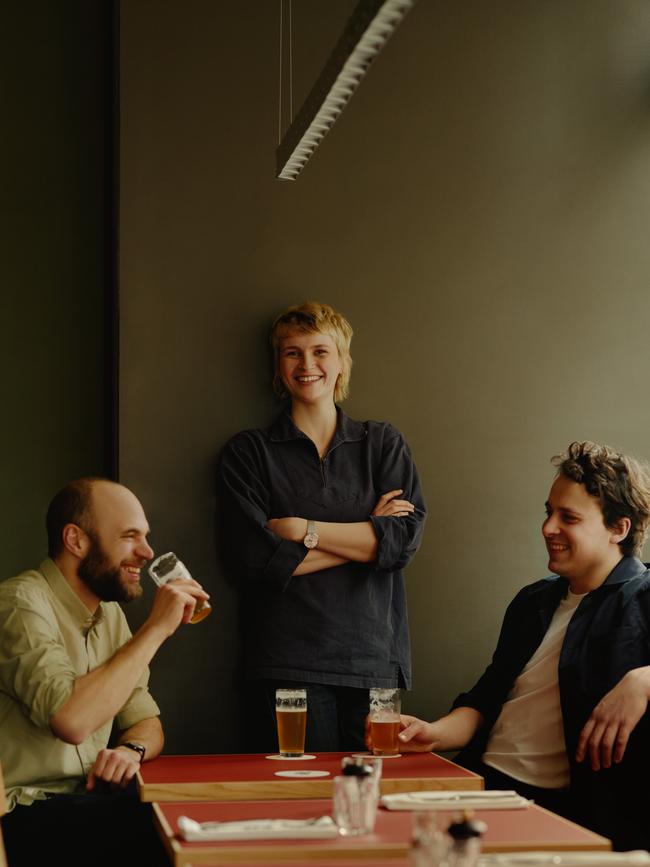
Elevated bistros: The recently opened Trio is a lively modern reimagining of the “wirtshaus”, the German version of a pub, by respected local chef Vadim Otto Ursus, with help from his two partners, Eva Alken and Clemens Roesch. Hidden in a curved building in the neighbourhood of Mitte, located near artsy watering hole Bar 3, the food at Trio is traditional and humble – lentil stew, wild-boar goulash and eggs in mustard sauce – but uses only the finest local ingredients; the wine list is short, well-priced and mostly from German producers and the beers are on tap. Another great addition is Café Frieda, overseen by ambitious Israeli chef Ben Zviel and his British partner (in life and in business), Samina Raza. Around the corner from their first restaurant, Asian-inflected Mrs Robinson’s, Café Frieda was conceived as an all-day bistro with an inspiring, feel-good atmosphere. When it comes to the food, it’s all about perfecting the basics – sourdough baked in-house with hand-milled flour, artisanal salted raw butter and homemade pickled vegetables – and tapping local farmers to work with whole animals and seasonal produce for a tight menu of modern bistro dishes.
Women-run eateries: Three of the most interesting restaurateurs in the city are women. First up is Dalad Kambhu of Kin Dee, who grew up in Bangkok, and is the first woman to win a Michelin star for a Thai restaurant in Europe. Kambhu serves a refined interpretation of Thai classics made with ethically sourced ingredients whose provenance is listed on the menu: her fish larb, for instance, comes with pike perch and mini fennel from “Lena and Phillip”. Then there’s Sarah Hallmann and chef Rosa Beutelspacher, the duo behind fine-diner Hallmann & Klee. The pair favour regional ingredients, creative flavour combinations and novel ways to spotlight vegetables. One recent standout involved thinly shaved kohlrabi marinated in mandarin vinaigrette and served with rapeseed oil and chilli. They also offer a non-vegetarian menu with snacks such as crisp chicken topped with fresh scallops and shiitake mushrooms.
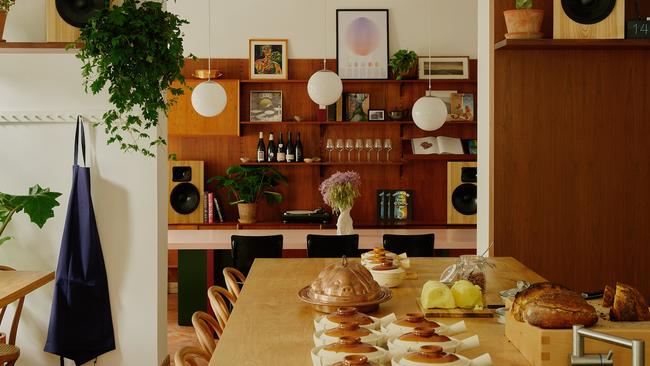
Playing with fire: At Ita in Prenzlauer Berg, Micaela Longo and chef Javier Barbosa oversee a passionate team bringing fresh interpretations of Latin American dishes made with ingredients sourced from local farms to the table, often given a crisp, smoky edge by their wood-fired oven. Newcomer Kramer, opened early this year by maverick restaurateur and ceramicist Fabian Kramer, is a stunning space filled with hanging plants and Japanese-style ceramics and a wood grill front and centre. Elsewhere, Jeffrey Claudio (who has cooked at Burnt Ends in Singapore), his partner Jessica Tan and Niklas Harmsen recently launched a yakitori rooftop pop-up – a tiny wood house with just 12 seats around a grill – in Kreuzberg and will open a permanent restaurant, called Stoke, early next year. Meanwhile, the freshly launched Ember – a summer residency that’s been running overtime – is also housed on a rooftop, in a funky glass-walled room with a large terrace where the outdoor kitchen, helmed by German chef Tobias Beck, is located. He offers four-course menus that might include wood-fired ricotta with broad beans or lamb al asador.
Vegetable led: Frea restaurant is a pioneer not just because of its ambitious plant-based menu, but also because of its zero-waste concept. Pushing the envelope even further is Oukan, a hidden restaurant in Mitte serving Japanese Buddhist temple fare in a space that feels part Zen monastery, part nightclub.
Where to play
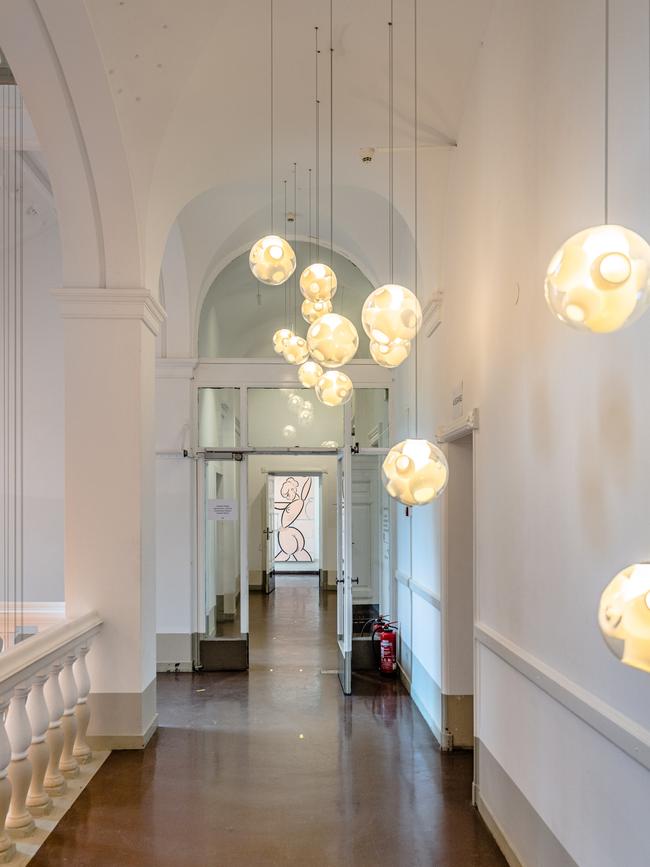
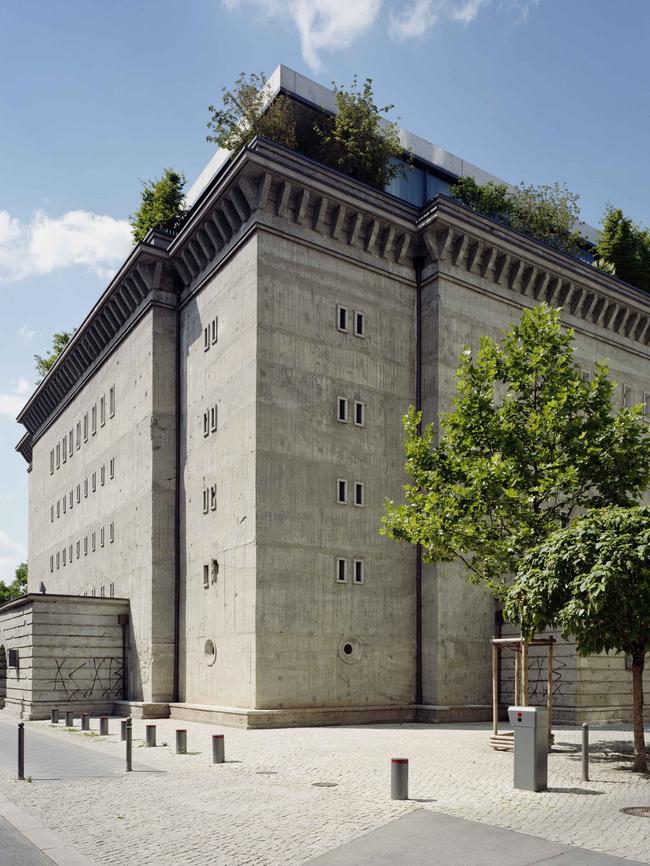
Provocative spaces: In addition to its many cultural institutions – the capital is home to three opera houses as well as two world-class cultural complexes – Berlin is continuously evolving. One of the most pioneering ways is the appropriation of industrial and historic spaces as venues for art. Take the Boros Collection, a five-floor private museum owned by Christian Boros, advertising czar and art collector, and his wife, Karen, in an abandoned WWII bomb shelter in Mitte. This private museum contains one of the city’s most singular family-owned contemporary collections, including works from Olafur Eliasson and Ugo Rondinone (open by appointment only). Another example is Silent Green, a former crematorium that has been turned into a cultural centre and gallery. In typical Berlin style, some of the most interesting spaces are hidden. That is true of the Berlinische Galerie, which is surrounded by high-rise GDR-style affordable housing not far from the Jewish Museum. Thanks to its excellent and much-respected most recent director, Thomas Köhler, the exhibitions here are always worth seeing. That’s also true of the Gropius Bau, a monumental building not far from Potsdamer Platz, which has become a platform for international exhibitions both eclectic and progressive; an entire floor was recently given to First Nations artist Daniel Boyd, who lives and works on Gadigal/Wangal Country, Sydney. Running until January is Ether’s Bloom, which explores the possibilities of AI.
Art in the wild: There are more and more reasons to head out to the green edges of Berlin. The most exciting, for those interested in contemporary culture, are all the new art-related projects being planted there, from the art park at Schlossgut Schwante in rural Brandenburg to the thought-provoking exhibitions at the Haus am Waldsee in the suburban neighbourhood of Zehlendorf. The Wehrmuehle in Biesenthal, a community-driven contemporary art museum on the site of an old mill that hosts the annual Art Biesenthal exhibition, is shaking it up in a traditionally conservative village in Brandenburg, an hour north of Berlin. An even more influential art festival in Brandenburg is Rohkunstbau, at Schloss Altdöbern, in a village 90 minutes south of the city.
For more Berlin tips subscribe to The W Report, a culture newsletter by Gisela Williams and fellow Berliner Antje Wewer. thewreport.substack.com
